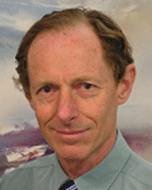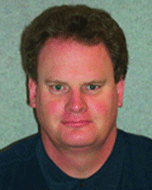Hydrocarbon charge history of the Gippsland Basin*
Keyu Liu A , Peter Eadington B , David Mills C , Richard Kempton D , Herbert Volk E , Geoffrey O’Brien F , Peter Tingate G , Louise Goldie Divko H and Michael Harrison IA CSIRO Earth Science and Resource Engineering P.O. Box 1130, Bentley, WA 6102. Email: Keyu.Liu@csiro.au
B CSIRO Earth Science and Resource Engineering P.O. Box 1130, Bentley, WA 6102. Email: Peter.eadington@csiro.au
C CSIRO Earth Science and Resource Engineering P.O. Box 1130, Bentley, WA 6102. Email: David.Mills@csiro.au
D CSIRO Earth Science and Resource Engineering P.O. Box 1130, Bentley, WA 6102. Email: Richard.Kempton@csiro.au
E CSIRO Earth Science and Resource Engineering P.O. Box 136, North Ryde, NSW 1670. Email: Herbert.Volk@csiro.au
F GeoScience Victoria Level 9, 55 Collins Street, Melbourne, Victoria 3095. Email: Geoff.O’Brien@dpi.vic.gov.au
G GeoScience Victoria Level 9, 55 Collins Street, Melbourne, Victoria 3095. Email: peter.tingate@dpi.vic.gov.au
H GeoScience Victoria Level 9, 55 Collins Street, Melbourne, Victoria 3095. Email: Louise.Goldie-Divko@dpi.vic.gov.au
I GeoScience Victoria Level 9, 55 Collins Street, Melbourne, Victoria 3095. Email: michael.harrison@dpi.vic.gov.au
The APPEA Journal 50(2) 729-729 https://doi.org/10.1071/AJ09093
Published: 2010
Abstract
As part of a larger petroleum system analysis and resource re-evaluation research program in the Gippsland Basin, over 400 samples from 29 selected wells in the Gippsland Basin were investigated using quantitative fluorescence techniques developed by CSIRO Petroleum, including the quantitative grain fluorescence (QGF) and QGF on extracts (QGF-E) and the total scanning fluorescence (TSF) techniques. Preliminary results have provided new insight into the hydrocarbon migration and charge history of the Gippsland Basin.
The investigation has revealed:
widespread occurrence of palaeo oil columns in some of the major gas fields, indicating that a significant amount of oil was charged into these reservoirs prior to a subsequent gas accumulation;
that some of the current oil intervals appear to have received a relatively late oil charge, either through new charge or through palaeo oil re-distribution due to adjustments within the petroleum system;
palaeo oil columns appear to be restricted to a certain distance range from the major source kitchens; and,
evidence of a sequential oil migration and displacement along structural highs where reservoirs distal to the source kitchens received progressively lighter and more mature palaeo oils.
These findings are consistent with the oil generation and migration model proposed by O’Brien et al (2008). Fluid inclusion petrographic investigations and molecular composition of inclusions (MCI) analysis are currently underway that will provide additional information on the hydrocarbon charge history in the Gippsland Basin.
Keywords: Gippsland Basin, hydrocarbon charge history, quantitative fluorescence, fluid inclusion, geochemistry, hydrocarbon migration, residual and palaeo-oil

Dr. Keyu Liu is a principal research scientist and research team leader of the Fluid History Analysis Team at CSIRO. His principal research areas are clastic sedimentology, hydrocarbon migration and charge history of petroleum reservoirs and laboratory experiments on enhanced oil recovery. Keyu has a BSc from China Ocean University, an MSc from the University of Sydney and a PhD from the Australian National University. He is an adjunct professor in China University of Petroleum (Beijing) and China University of Geosciences (Wuhan). Member: AAPG, SPE, AGU, IAS and PESA. |

Dr Peter Eadington leads the Geofluids Science Research Group in the CSIRO division of Earth Sciences and Resource Engineering. He develops new technologies that use fluid inclusion and related techniques for evaluating investigate oil migration and accumulation in exploratory wells. He engages with industry to conduct investigations in a range of basin styles and reservoir types in Australia and internationally, and by licencing technology to larger companies. Peter is also in a team developing nanochemical sensors for hydrocarbons in marine surveys. In 2005 he received the CSIRO Medal for Research Achievement, and in 2007 the Gibb Maitland Medal of the Geological Society of Australia for contributions to the resource industries in Western Australia. He has a PhD from Newcastle University and a Diploma of Business Administration from Macquarie University. Previously, he worked in minerals Divisions in CSIRO, BHP and Geophysical Service International. Member: PESA, FESAus, AAPG, and GSA. |

David Mills is a research project scientist CSIRO Earth Science and Resource Engineering. He received his BSc degree in Physics from University of Newcastle, NSW in 2001. David started his career as a process engineer at Peregrine Semiconductor Australia in Sydney from 2002. He joined the Fluid History Analysis Group at CSIRO Petroleum in 2007 working on the quantitative grain fluorescence (QGF) project. David is primarily responsible for QGF consulting service work. He is also actively involved in QGF research. David is currently undertaking an undergraduate course in geoscience at the Curtin University of Technology. |

Dr Richard Kempton holds a BSc (Hons) degree in geology from the University of Melbourne, and obtained his PhD in 2000 from the University of Western Australia for work on carbonate/evaporite sedimentology and diagenesis. He has worked as an exploration geologist for Queensland Gas Company and is currently a research scientist with the Fluid History Analysis Group at CSIRO Exploration and Earth Sciences.
|

Dr Herbert Volk is geologist with CSIRO Earth Science and Resource Engineering since 2000, leads the petroleum systems stream and is team leader of a group of organic geochemists. He is involved in numerous projects in the organic geochemistry and petroleum microbiology domain and has experience with oils, source rocks and organic matter from the Proterozoic to the Holocene, fluid inclusion oil geochemistry, petroleum microbiology and basin modelling. Herbert was awarded an MSc degree (1996) in geology from the University of Erlangen, Germany, and a PhD from the University of Aachen, Germany. Member: AAPG, EAOG and PESA. |

Dr Geoffrey O’Brien has a first-class honours degree and PhD in earth sciences. He has worked in the petroleum exploration sector for over 20 years, including for BHP, Western Mining Petroleum, AGSO/Geoscience Australia, the University of Adelaide and has consulted to a wide number of companies in Australia and overseas. He is currently the manager of the energy geoscience group at GeoScience Victoria. Dr O’Brien’s key technical specialities include the application of integrated petroleum systems approaches to basin evaluation, with an emphasis on basin and migration modelling (1D, 2D and 3D), charge history analysis, remote sensing, fault and top seal analysis and seismic interpretation of hydrocarbon leakage and seepage. Dr O’Brien has won numerous industry awards and was the 1992 PESA Australia Lecturer; he has also published over 170 papers and abstracts. |

Dr Peter Tingate is a senior geologist with the Energy Geoscience Group at GeoScience Victoria. He works on the carbon dioxide sequestration potential of Victoria’s sedimentary basins, as well as their petroleum systems. Peter received his BSc (Hon) and PhD from the University of Melbourne and worked at the Australian School of Petroleum (formerly NCPGG) until joining GeoScience Victoria in 2008. He has published papers on basin modelling, diagenesis of sedimentary rocks and geological storage of CO2. Member: PESA and AAPG. |

Dr Louise Goldie Divko has an honours degree in Science, a diploma of education and a PhD in geology. She has worked in both the education and petroleum sectors for Deakin University, the Victorian State Government and Schlumberger. Louise is currently employed as a geologist at GeoScience Victoria where her work focusses on the geological carbon storage potential and subsurface geology of Victoria’s sedimentary basins. She is a committee member of the PESA Vic/Tas Branch. |

Michael Harrison completed his Bachelor of Science in 2003 and submitted his Master of Science in November 2008 at Monash University. His MSc project explored the tectonic development and structural evolution of the South Wanganui and northern Wairarapa basins, North Island, New Zealand. Michael is currently working as a petroleum geoscientist with the energy geoscience group at GeoScience Victoria. He has been working at GSV for the past three years and has focussed on evaluating the CO2 containment potential of the Gippsland Basin as part of the Victorian Geological Carbon Storage (VicGCS) initiative. Member: PESA Vic/Tas Branch. |
References
Eadington, P.J., Lisk, M., and Krieger, F.W., 1996—Identifying oil well sites. US patent no. 5,543,616.George, S.C., Eadington, P.J., Lisk, M., and Quezada, R.A. (1998). Geochemical comparison of oil trapped in fluid inclusions and reservoired in Blackback Oilfield, Gippsland Basin, Australia PESA Journal 26, 64–81.
Liu, K., and Eadington, P. (2005). Quantitative fluorescence techniques for detecting residual oils and reconstructing hydrocarbon charge history Organic Geochemistry 36, 1023–36.
Liu, K., Fenton, S., Bastow, T., van Aarssen, B., and Eadington, P. (2005). Geochemical evidence of multiple hydrocarbon charge and long distance oil migration in the Vulcan Sub-basin, Timor Sea The APPEA Journal 45, 1–18.
O’Brien, G.W., Tingate, P.R., Goldie Divko, L.M., Harrison, M.L., Boreham, C.J., Liu, K., Arian, N., and Skladzien, P., 2008—First order sealing and hydrocarbon migration processes, Gippsland Basin, Australia: implications for CO2 geosequestration. Eastern Australian Basins Symposium, 1–28.


